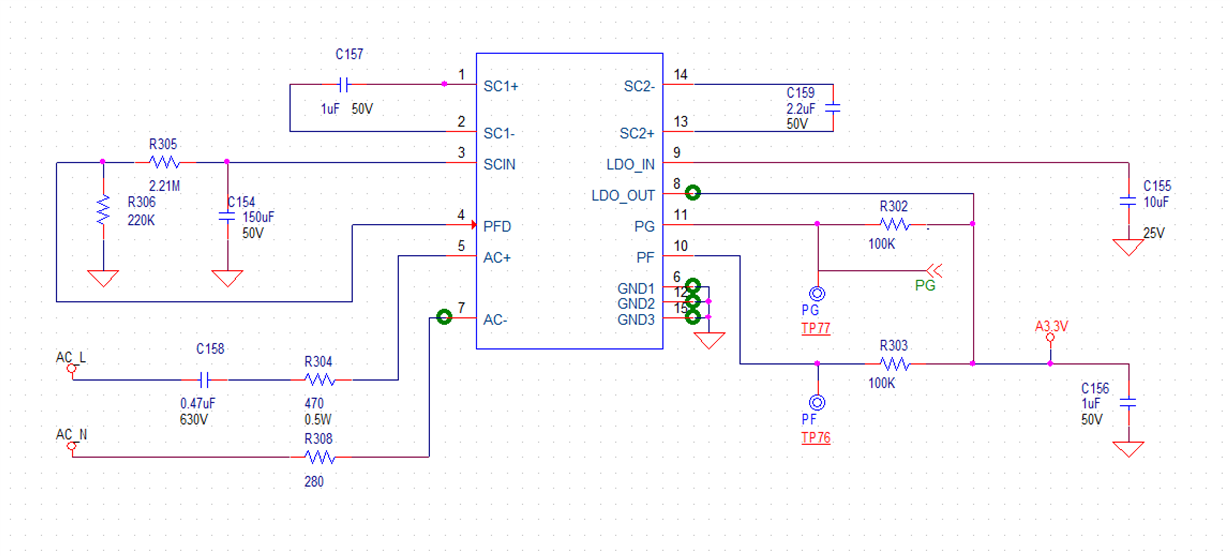Hello,
I'm using the TPS7A78 part in FB mode to power digital circuits; in this case GND is not connected to AC-(Neutral) line. The GND line is tracking the AC- line, which could be the hot or neutral line and so far using the demo boards (connecting the TPS7A78 to my digital demo board), I have no issue operating the digital circuits. Should I be concerned that the GND of the digital circuit is tracking the neutral/hot line, in case I swap the polarity of the cable.
I believe that what should matter to the digital circuit is the diff potential, unless there is a leaky active device in the digital circuit. Should I take any precautions, such as adding protective diodes for reverse bias?
Would there be any long term reliability issues?
Thanks.
Sana



